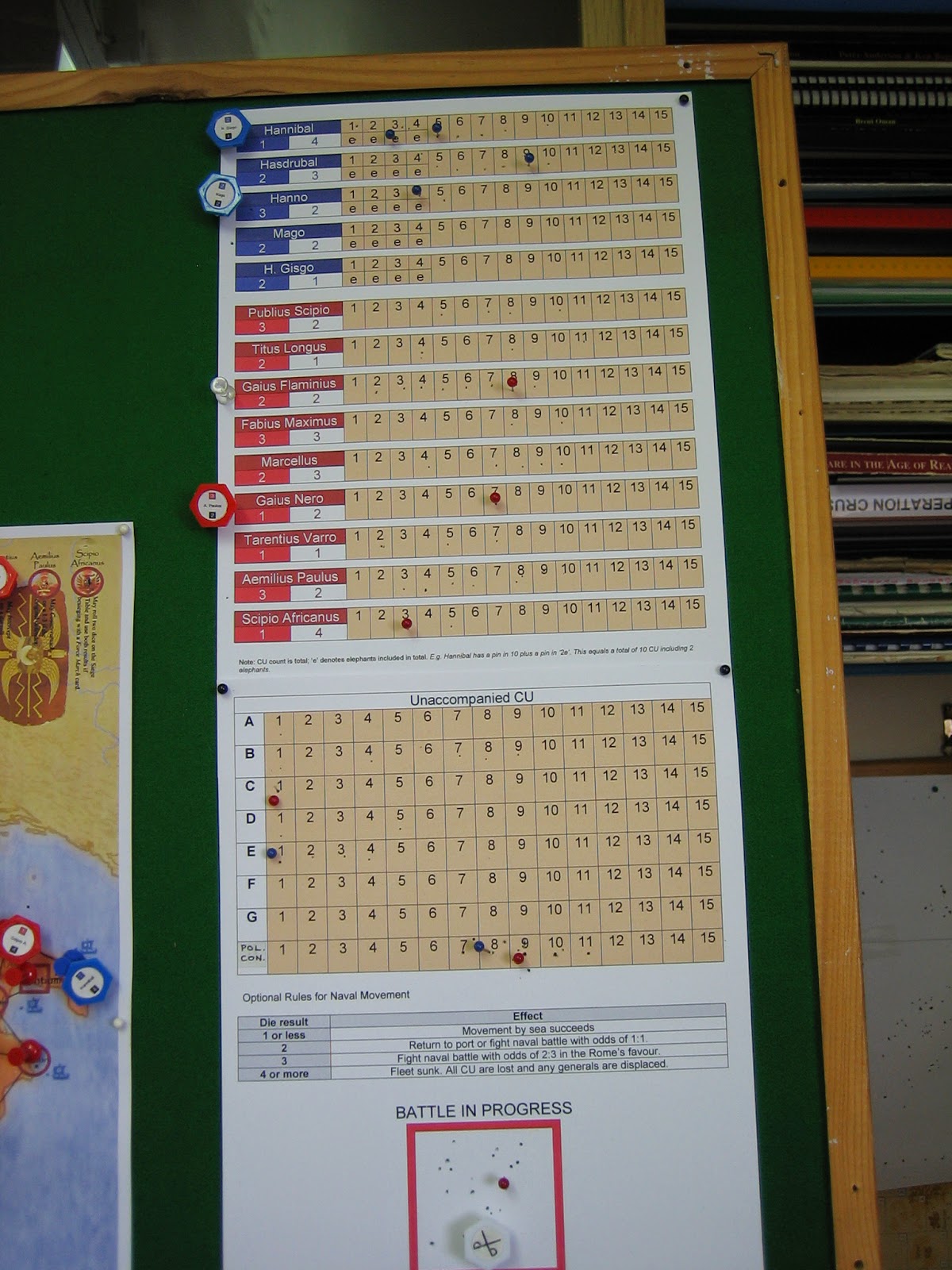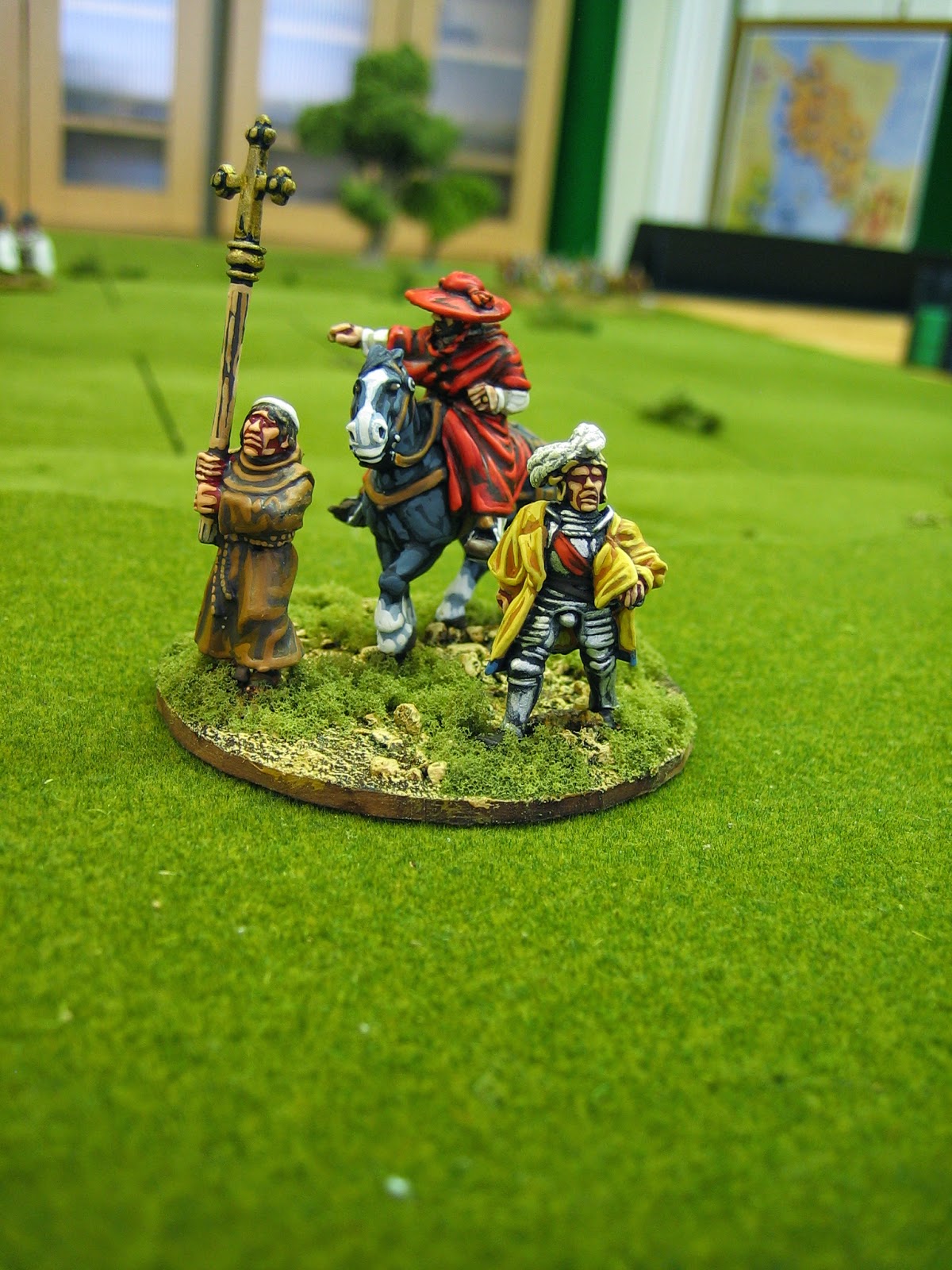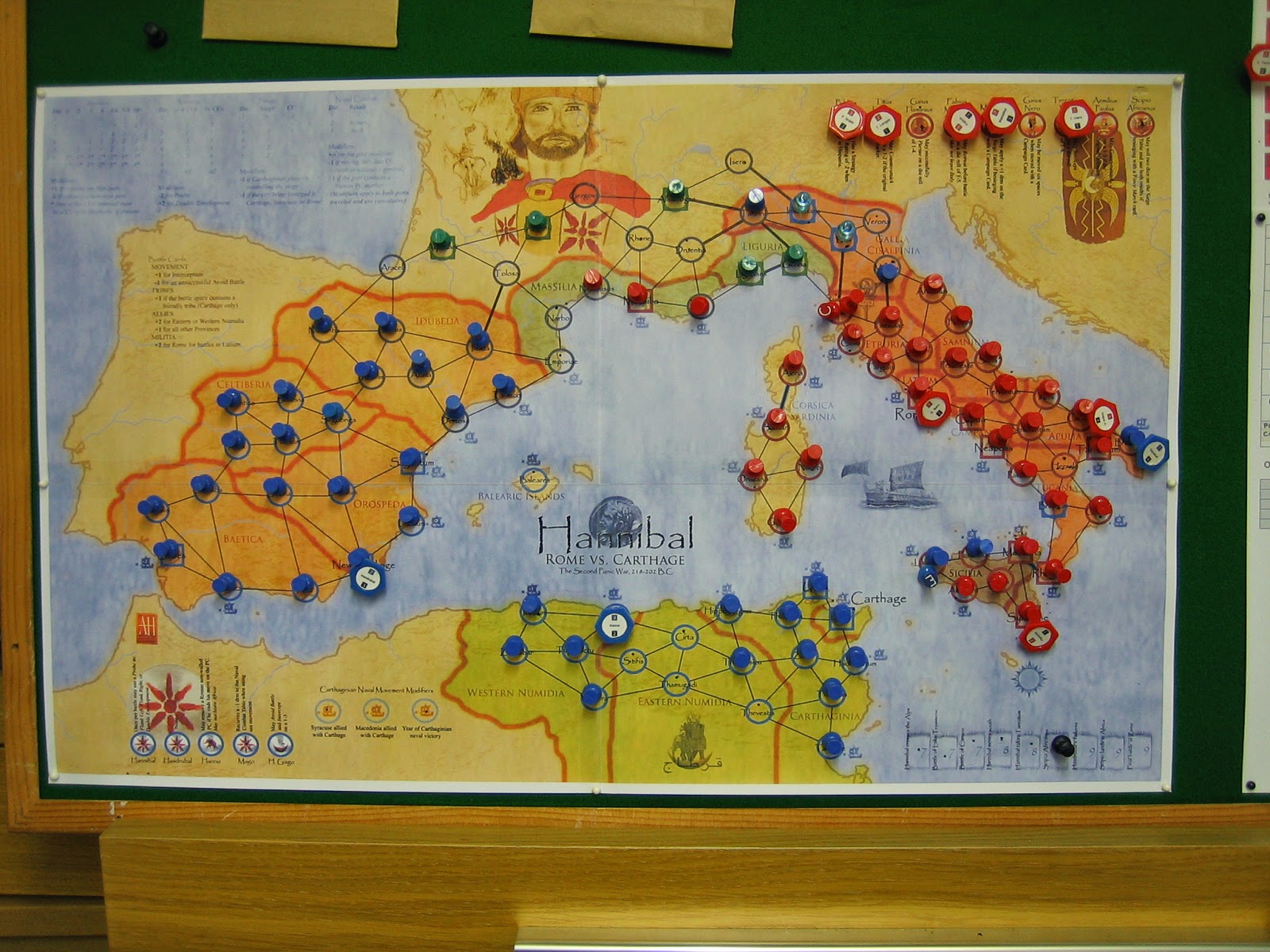
The situation at the start of turn seven - 207 BC to 209 BC. Nero and Longus are the elected consuls. Flaminius and Scipio Africanus are pro-consuls.
Carthage: Card 57: Hannibal marches over the Alps to Araceli in Gallis Transalpinia. Hannibal's passage is not without cost - he loses 1 CU in the mountains (25% attrition).
Rome: Card 3: Event - Western Numidia Revolts.
Carthage: Card 23: Carthage regains political control over three areas in W. Numidia.
Rome: Card 48: Event - Recruit Auxilliaries. Longus recruits 2 CU.
Carthage: Card 39: Minor Campaign Card - Hannibal and Hasdrubal march to link at Iberus in Northern Hispania.
Rome: Card 24: Scipio sails to Africa. He lands at Carthage. His siege does not go according to plan and he loses 1 CU.
Carthage: Card 33: Major Campaign card. Hasdrubal marches south to New Carthage. Hannibal, the thought of his ignominious reversals gnawing at him, marches to Gergovia in Gallia Transalpinia with 8 CU - is a new invasion on the cards. Hanno marches to confront Scipio at Carthage.

The Situation at the Battle of Carthage. One rectified mistake (not shown here) is that Hannibal has restored his elephant points - elephant points do not count as they do in the board game, they just allow Hannibal to field some elephant units in miniatures battles; elephant units can always be fielded by Carthage in Spain or Africa.
Scipio is massively outnumbered - 11 : 4. The matter of Victory banner allocation has, I think, been resolved. Each side will get 6 banners plus 1 banner for every five units. This gives, for this battle, Scipio 9 and Hanno 14. On reaching zero, that side loses the battle.
Will the terrain come to Scipio's aid?
The Carthaginian lines - absolutely packed. I offered Peter the option not to field all of his units (within reason) but to take the victory banners attributable to his army size. He refused the offer, asking if if he could keep those not fielded as off table reserves. I said no, so he fielded everything. In retrospect, having thought about it, I should have allowed him to field a balanced force as off table reserves .They could have been 'table sectored' off table and been brought on using inspired leadership cards. As it was, the numbers of Carthaginians worked against them - Cannae fashion.
Rome deployed second, largely neglecting their left table sector. The chips are used as a simple visual aid: Green for light troops, Blue for medium troops, red for heavy troops. 'Stones' markers on chips show 'blocks' lost (see pics below).
I am currently thinking about a few changes to the make up of the Roman army. I don't like Hastati units being classed as auxillia (I think they should be medium infantry), and I'd like some form of triplex acies rule. If I can come up with something simple for the latter it should go some way to balance the loss of the former, very / over useful, status. This might lead to a re-evaluation of all unit abilities. I did this for hex-less games and it worked well.
Carthage advanced against the Roman left.
Their attack seemed to be developing nicely.
Rome moved to shore up their left against the attack and, for a while, the battle here hung in the balance.
The concerted Carthaginian attack by elephants, light troops and shrieking tribesmen was easily beaten off by the inspired leadership (two leaders were employed by Rome in this sector) and some even better dice rolling - yet again Carthage rolled the proverbial 'bag of the brown stuff'.
At the end of the first nights play the balance of power is shifting towards Rome. Both sides have 6 victory banners left each.
The positions at the end of play. Here on the Roman right the battle has been an enormous skirmish.
In the centre, the skirmish has come to hand strokes - especially around the woods - and the Romans, in terms of 'blocks' killed have come out on top; several Carthaginian units have two or three block (out of four) losses.
The Position on the Roman left has stabilised. The Romans were definitely the winners here but I think the Carthaginians could still turn the tables here.
The battle will be concluded next week.















































